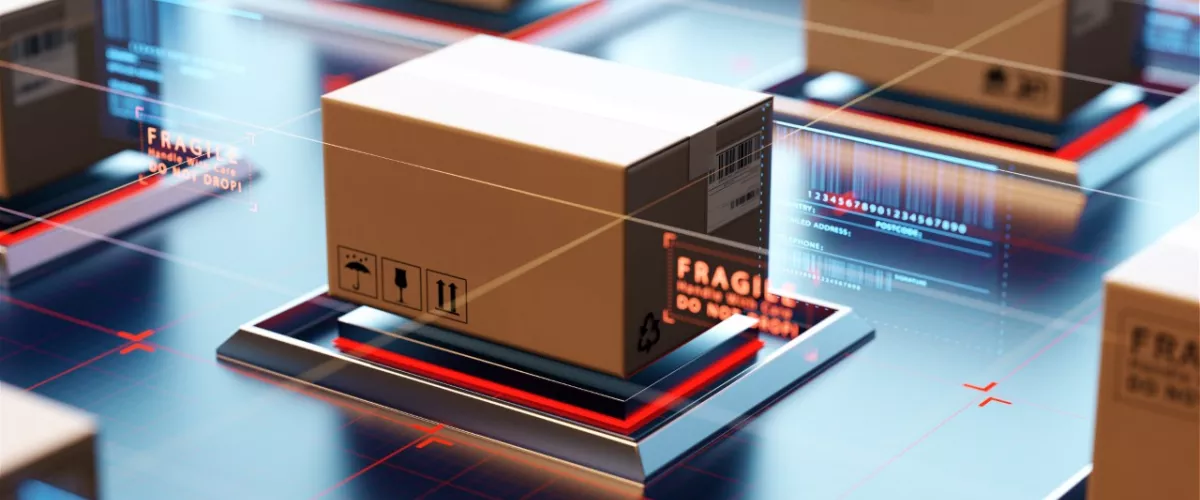Freight expectations

Increasingly logistics customers and others are seeking visibility into their supply chains. Fortunately, new technology is making this easier.
At a Deakin University webinar in April, 2021 to launch The Australian Guide for Implementing Food Traceability, which Toll participated in, visibility was described as critical for several reasons including safety, efficiency, brand management and customer experience.
It’s an area where there has been a lot of interest and perhaps now as we work through vaccinating the world against the COVID virus we can see why it really matters.
COVID vaccine visibility – the world’s most scrutinised logistics?
For vaccine distribution, visibility is crucially important, as vaccines must be kept within a narrow temperature range and proven to have been. With COVID, challengingly the world’s most successful vaccine, the Pfizer vaccine, is also one that has the most stringent temperature requirements – goods must be kept at -70c.
This has required Pfizer to implement a very strong visibility regime with real time location and temperature monitoring for the specialist shippers in which the vaccines must travel. It has similarly required logistics providers who move the vaccines on from Pfizer’s custody to implement cold chain solutions capable of maintaining these temperatures.
Beyond making sure the logistics are okay, there are other stakeholders in the vaccine supply chain for whom visibility is important.
Governments, as the purchasers of vaccines, want to closely monitor supplies and are also monitoring the progress of vaccination administration to patients. Progress in terms of numbers of people vaccinated is reported publicly daily.
Medical centres, administering the vaccines, want to know when they might receive vaccine deliveries, so that they can book in patients.
Everyone wants to know which vaccine and batch; any individual has received in case there are side effects and follow up is needed.
This requirement for visibility in the healthcare industry is not specific for COVID vaccines, batch number is recorded for all medicines, but it is fair to say that a wider group of stakeholders than usual is involved in COVID vaccines and there is heightened interest.
Healthcare visibility – leading the pack
The Healthcare industry leads the world in terms of supply chain visibility ambition. In the US, the FDA has regulated for visibility along the supply chain to be in place down to the package level by the end of 2023. Specifically, they call for “an electronic, interoperable system to identify and trace certain prescription drugs” meaning that they expect to be able to trace product back along the supply chain rapidly and automatically.
When you consider how many packages of prescription drugs are sold, that’s a lot of traceability.
General visibility – the data revolution continues
Whilst Healthcare is in the vanguard it will be quickly followed by other industries. And there are already elaborate systems for tracking food just not as granular, as the Healthcare industry aims to be, yet.
The driver, in both these industries, of course is product integrity and consumer experience. No one wants to take the wrong medicines, nor do they want to consume contaminated foods. On the positive side with good visibility consumers can find out a lot about the products they are buying and that is very useful.
At its most fundamental, visibility is just information but in order for that information to be made useful it must become shareable. To become shareable some standardisation is required.
It’s not unlike language, it’s all very well for someone to speak French and another person Italian, but the conversation is only possible and value from that conversation only obtainable when there is agreement to converse in a common language.
Visibility and traceability along a supply chain is then best achieved with standards, which is what the US FDA has called for. Similarly, the Guide for Implementing Food Traceability calls for standards.
Toll is a supporter of standards and has recently been working with industry and the Australian Government to support the establishment of a National Location Register, which is a world first for the transport industry. It’s a way of standardising location information and a step towards digitisation for the industry.
If we look into the not too distant future we see technology increasingly making more information available. The Internet of Things (IoT), promises the connectivity of billions of devices, the volume of data from which will be somewhat mind boggling. A lot of this data is of use to the logistics industry because the “things” that will be wanting to be connected will be people, vehicles and their goods.
There’s no doubt there is going to be more data and there are going to be more stakeholders interested in it, as COVID vaccine distribution is demonstrating.
The path to visibility and traceability in freight is a multifaceted one
Toll welcomes the opportunity to talk to customers about their visibility needs and aspirations.